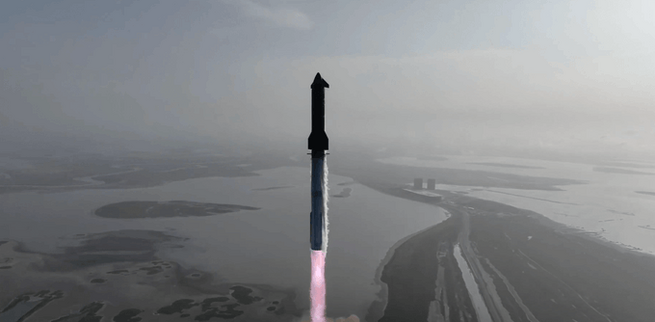
What happened during SpaceX’s Starship Test Flight 9? SpaceX’s latest Starship test flight—the ninth of its kind—saw the spacecraft successfully separate from its Super Heavy rocket booster and reach Earth’s orbit. However, after a smooth initial launch, Starship lost attitude control, spiraled uncontrollably, and made a fiery re-entry into the Indian Ocean. Many fans and industry watchers were left asking: why did Starship spin out of control, and what does this mean for future launches?
This high-stakes flight marked a pivotal moment for SpaceX’s Starship program, designed to eventually carry humans to the Moon and Mars. The test aimed to validate multiple mission-critical systems, including cargo hatch deployment, booster recovery, and spacecraft orientation—essential for both commercial and NASA’s Artemis missions.
The launch, which took place from SpaceX’s Starbase facility in southern Texas, was initially smooth. The Super Heavy booster, which had been flight-proven during Starship’s seventh test, performed as planned, separating from Starship and falling back toward Earth. Notably, SpaceX had successfully “caught” this booster with the launch tower during prior tests, showcasing progress toward reusable rocket technology, a key to reducing launch costs.
However, the mission encountered a critical failure when Starship couldn’t open its side cargo hatch to deploy test payloads. Later, it suffered a loss of attitude control—a condition where the spacecraft can no longer orient itself properly for re-entry. This led to an uncontrolled descent into the Indian Ocean, despite pre-cleared airspace.
This was SpaceX’s smoothest Starship test flight of the year—a notable achievement considering the back-to-back explosions earlier in 2025. In fact, this test came less than a week after the Federal Aviation Administration (FAA) granted clearance following safety reviews of those explosions. The FAA’s expanded hazard areas were a direct response to the previous failures, ensuring public safety while allowing continued innovation.
The mishap in this test flight highlights the engineering challenges SpaceX faces in developing a fully reusable, heavy-lift spacecraft. The inability to deploy payloads and the loss of multiple Raptor engines during previous tests point to areas needing further refinement. However, Elon Musk’s ambitious plan to turn Starship into a reliable cargo and crew transport for NASA and commercial clients remains undeterred.
Looking ahead, SpaceX plans to incorporate lessons from this test to improve booster catch systems, engine reliability, and payload deployment mechanisms. Future test flights are expected to feature upgraded flight software and hardware improvements, especially focused on attitude control and re-entry stability. These advancements will be crucial for winning high-value contracts and maintaining leadership in the commercial space industry.
For space enthusiasts, investors, and those following the future of space tourism, this test flight underscores both the promise and the risk of SpaceX’s ambitious Starship program. The eventual goal is not just to send rockets into orbit but to make space travel routine and cost-effective. With NASA’s Artemis missions and commercial satellite deployments on the horizon, every test flight adds valuable data, pushing us closer to a new era of human space exploration.
𝗦𝗲𝗺𝗮𝘀𝗼𝗰𝗶𝗮𝗹 𝗶𝘀 𝘄𝗵𝗲𝗿𝗲 𝗿𝗲𝗮𝗹 𝗽𝗲𝗼𝗽𝗹𝗲 𝗰𝗼𝗻𝗻𝗲𝗰𝘁, 𝗴𝗿𝗼𝘄, 𝗮𝗻𝗱 𝗯𝗲𝗹𝗼𝗻𝗴. We’re more than just a social platform — from jobs and blogs to events and daily chats, we bring people and ideas together in one simple, meaningful space.